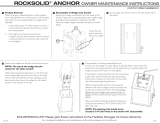Below you will find brief information for WP630, WP830, WP860. These Wallenstein Wood Processors are designed for efficient log processing. They include features such as hydraulic winches for pulling logs to the machine, a chainsaw for cutting, and a wood splitter to process lumber. The operator's manual provides crucial guidance on safety, operation, and maintenance to ensure optimal performance and safe usage.
Below you will find brief information for WP630, WP830, WP860. These Wallenstein Wood Processors are designed for efficient log processing. They include features such as hydraulic winches for pulling logs to the machine, a chainsaw for cutting, and a wood splitter to process lumber. The operator's manual provides crucial guidance on safety, operation, and maintenance to ensure optimal performance and safe usage.




















-
 1
1
-
 2
2
-
 3
3
-
 4
4
-
 5
5
-
 6
6
-
 7
7
-
 8
8
-
 9
9
-
 10
10
-
 11
11
-
 12
12
-
 13
13
-
 14
14
-
 15
15
-
 16
16
-
 17
17
-
 18
18
-
 19
19
-
 20
20
-
 21
21
-
 22
22
-
 23
23
-
 24
24
-
 25
25
-
 26
26
-
 27
27
-
 28
28
-
 29
29
-
 30
30
-
 31
31
-
 32
32
-
 33
33
-
 34
34
-
 35
35
-
 36
36
-
 37
37
-
 38
38
-
 39
39
-
 40
40
-
 41
41
-
 42
42
-
 43
43
-
 44
44
-
 45
45
-
 46
46
-
 47
47
-
 48
48
-
 49
49
Wallenstein WP830 User manual
- Type
- User manual
- This manual is also suitable for
Below you will find brief information for WP630, WP830, WP860. These Wallenstein Wood Processors are designed for efficient log processing. They include features such as hydraulic winches for pulling logs to the machine, a chainsaw for cutting, and a wood splitter to process lumber. The operator's manual provides crucial guidance on safety, operation, and maintenance to ensure optimal performance and safe usage.
Ask a question and I''ll find the answer in the document
Finding information in a document is now easier with AI
Related papers
-
Wallenstein WP230 User manual
-
Wallenstein WP820 User manual
-
Wallenstein WP235 User manual
-
Wallenstein WP835 User manual
-
Wallenstein WP835 Parts Manual
-
Wallenstein WP865 Parts Manual
-
Wallenstein FX35 Skidding Winch User manual
-
Wallenstein WX450 User manual
-
Wallenstein LX5200 Skid Steer Grapple User manual
-
Wallenstein BXT4228SU User manual


















































